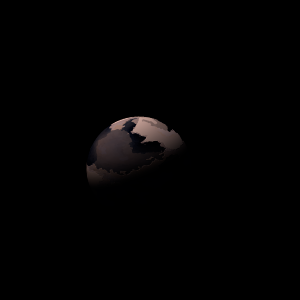|
|
Space Astro
|
Info for exoplanet "Eibo-rwaz'yuan"
| Scientific (actual) data |
|---|
| Name | Kepler-1687 b |
| Planet status | Confirmed |
| Radius | 0.148 |
| Orbital period | 5.77954 |
| Semi major axis | 0.0522 |
| Inclination | 87.09 |
| Discovered | 2020 |
| Updated | 2021-02-05 |
| Tzero tr | 2454970 |
| Impact parameter | 0.7593 |
| Temperature (kelvin) | 578 |
| Publication | Announced on a website |
| Detection type | Primary Transit |
| Alternate names | 2MASS J19185826+5047133 b, K02588.01, KIC 12156347 b, KOI-2588 b, KOI-2588.01, WISE J191858.27+504713.4 b |
| Star name | Kepler-1687 |
| Right ascension | 289.74° |
| Declination | 50.79° |
| Mag i | 14.966 |
| Mag j | 13.491 |
| Mag h | 12.843 |
| Mag k | 12.739 |
| Star distance | 422.02 |
| Star metallicity | -0.2 |
| Star mass | 0.565 |
| Star radius | 0.65 |
| Star temperature | 4249 |
| Star alternate names | 12156347, 2MASS J19185826+5047133, KIC 12156347, KOI-2588, WISE J191858.27+504713.4 |
| Wikipedia article | Kepler-1687 b |
Back
| |
| Fictional info (?) |
|---|
| Suggested name | Eibo-rwaz'yuan |
| Planet type | Hot planet |
| It may have had sulfur dioxide oceans in the past, but these would have vaporized as the temperature rose due to a runaway greenhouse effect.
The smooth Borealis basin in the northern hemisphere covers 13 percent of the planet and may be a giant impact feature.
A prominent result is the "great green spot", a giant storm that is known to have existed for centuries since it was first observed by radar. |
| Atmosphere | Carbonyl sulfide | 39% |
| Helium | 32% |
| Sulfur dioxide | 19% |
| Oxygen | 4.1% |
| Carbon dioxide | 3.7% |
| Hydrogen | 1.4% |
| Hydrogen deuteride (HD) | 0.68% |
| Atmospheric pressure | 0.17 bar |
 |
| Moon | Ernoulwoy | Very small irregular oceanic moon |
| Yiqweng'xyayech | Medium-sized almost round crater-filled moon |
| Mwodyueg | Very small round rocky moon |
| Yongw-youlyun | Small potato shaped rocky moon |
| Google search for Eibo-rwaz'yuan |
|
Website by Joachim Michaelis
|
|
|
|